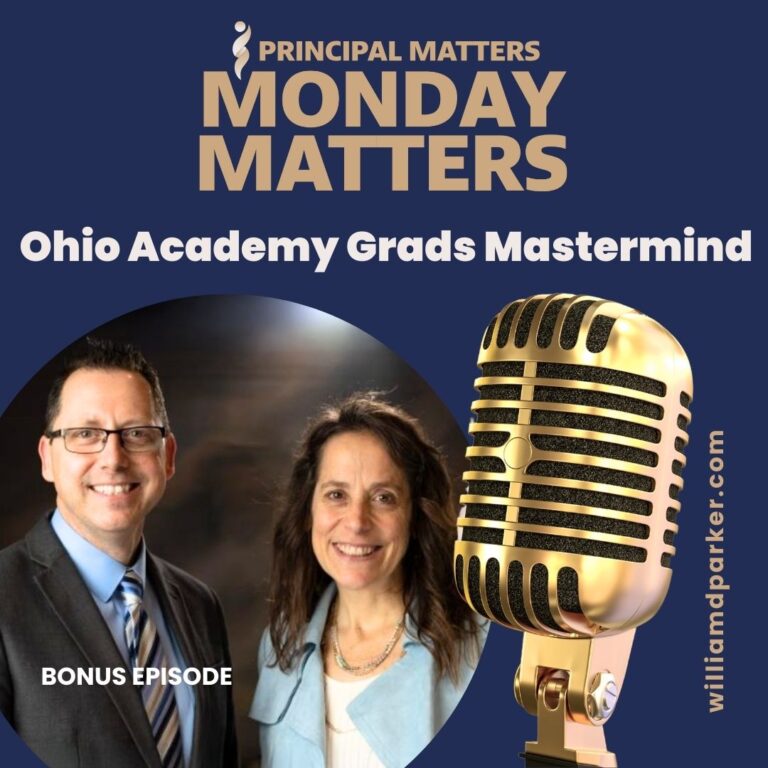Podcast: Play in new window | Download
When is the last time you heard the following words? “We do what’s best for kids.” Of course, we want school leaders to do what is best for students. But we also want to provide a place where adults feels supported and encouraged in bringing joy to students.

Those priorities are not in opposition to one another. And if you are going to encourage a culture of trust, collaboration and interdependence, you must value the input of your entire school community. That’s why I’m so excited to continue our conversation with author and principal Jen Schwanke as she co-hosts Part 2 of promoting a school culture of trust.
In Part 1, we discussed the three kinds of culture school leaders may face: cultures of isolation, cultures of distrust, or cultures of teamwork. In Part 2, we talk about how to cultivate a culture of trust or teamwork by promoting positive outcomes for everyone – students, staff, teachers, and community members.
Jen discusses some key questions for exploring your culture. Think about the following when seeking the input of your school members:
- How do you feel about what’s happening in your classes and our school?
- What is it that you see happening within our school that we can work on?
- Tell me why you think this challenging situation has happened?
- What do you think we can do about this?
- Is there anything you’d like to share?
Listen to the history of your school, try digest information without passing judgement, and don’t commiserate with criticisms.
Also, in this episode, Jen and I talk about other scenarios like:
- Does your school enjoy plenty of laughter? If not, it is possible students and teachers are not finding joy in their work.
- What philosophy drives your leadership? Embracing a philosophy that what’s best for students = every member of the school community feels valued.
- How do you encourage openness instead of isolation? Having open conversations vs. talking behind the back of the others.
Don’t miss out on the entire conversation for takeaways and encouragement in the way you are building culture as we continue our series on Strategies and Solutions for School Leaders.
Let’s Wrap This Up
Ultimately, when everyone feels valued, you are doing what’s best for kids. When you study cultures at Chick-fil-a, Southwest Airlines, or Starbucks Coffee and other successful companies, each of these organizations focuses on a commitment to employee satisfaction as much as customer satisfaction. And a focus on serving all helps lead to school-wide cultures of trust.
Now It’s Your Turn
What ways can your commitment to “What’s best for students” involve all members of your school community? What is a way you can embed open-ended questions into conversations with students and teachers in order to more deeply understand the “why” of your culture? What is one step you can take this week to model trust in others?
Sign-Up For Free Updates and Ebook
When you enter your email address below, you will automatically receive my newest posts and a free Ebook, 8 Hats: Essential Roles for School Leaders. Let’s keep learning together!
Subscribe for free weekly updates and receive free e-book!
(function($) {window.fnames = new Array(); window.ftypes = new Array();fnames[0]=’EMAIL’;ftypes[0]=’email’;fnames[1]=’FNAME’;ftypes[1]=’text’;fnames[2]=’LNAME’;ftypes[2]=’text’;}(jQuery));var $mcj = jQuery.noConflict(true);
Principal Matters–The Book!

School leaders are very busy, so each of the twenty-four chapters is designed as a quick-read and followed with take-action questions for follow-up or reflection. If you want practical ideas on understanding your purpose, managing school teams, dealing with challenges, and leading with courage, action, motivation, and teamwork, go HERE to pick up a copy for you or your team.
Messaging Matters

Harness the power of messaging to create a culture of acknowledgment, respect, and celebration. Written specially for leaders, this title is divided into three parts, helping readers to maximize their role as chief communicators with students, teachers, and parents and community. Each chapter includes suggestions for using digital tools to enhance messaging and ends with reflection questions and practical next steps.


